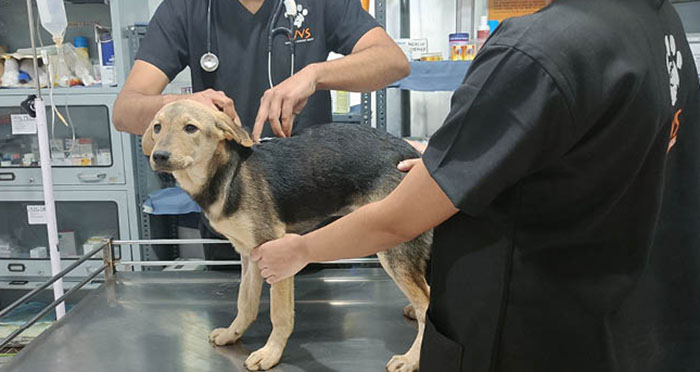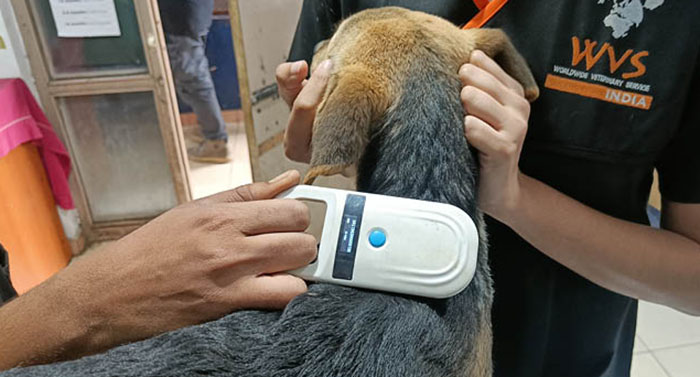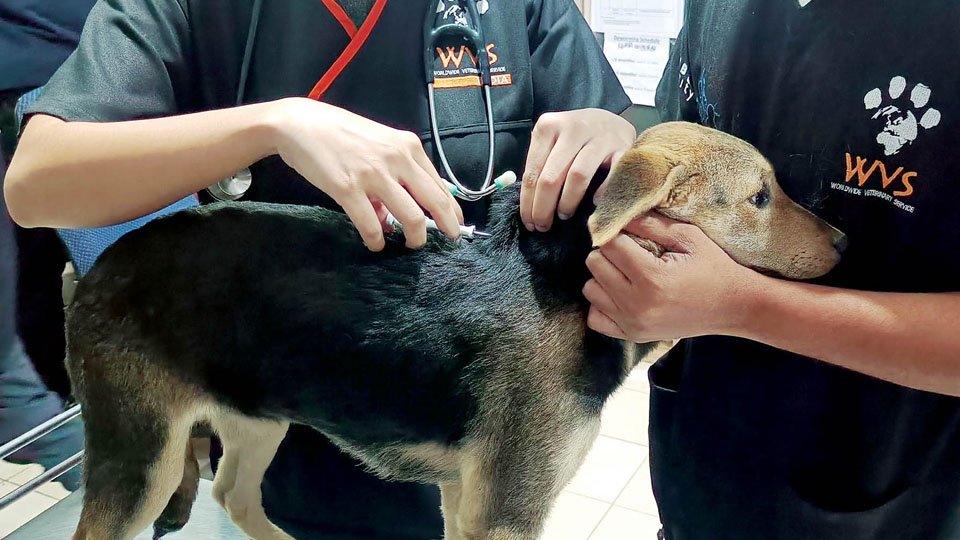By Dr. M. Sumant in Dre
A dog is man’s best friend – one who can be tempted to wander and explore, and who risks getting lost. Unfortunately, it’s not uncommon for dogs to end up in shelters without a way to get home.
A staggering number of dogs are lost in shelters every year because of a lack of reliable identification methods after they are found. If your pet is lost, it is more likely to be found again if it is micro-chipped as it can be scanned by a vet and the owner’s details can be retrieved from the database.
What is a microchip?
A micro-chip is a small electronic chip encased in a glass cylinder about the size of a grain of rice. Once the micro-chip is implanted under the skin, your dog will remain intact. The chip contains a unique 15-digit number for identification, similar to an Aadhaar number for individuals.
When scanned, the chip transmits the serial number using passive RFID (radio frequency identification) technology to the scanner, which displays the number on the screen.
The International Organization for Standardization (ISO) has approved and recommended a global standard for microchips. The global standard ensures a uniform identification system worldwide. ISO standard frequency is 134.2 kHz. Also, contrary to popular belief, a micro-chip is not a GPS device and cannot track your pet if it goes missing. The chip is RFID that allows it to be read by a microchip scanner, but only once your pet is located.
A two-step process
This is a two-step process where a chip is implanted and then a unique identification number is recorded with all the important details about the owner and the pet.
A micro-chip is pre-installed in the sterile syringe. The chip is injected subcutaneously (under the skin) between the shoulder blades by your vet using a hypodermic needle on the back of your pet’s neck. Although the needle is slightly larger than the needles used for injections, it is less painful than a regular needle.
No surgery or anesthesia is required and the micro-chip can be implanted during any routine veterinary examination. Make sure you read it immediately after you inject using the micro-chip scanner. Also, ask your vet to scan your pet’s microchip at least once a year to make sure it’s still recognized.
Placing a microchip is only the first step, and the microchip must be registered in a central database and your registration information updated in the database.

Why should you micro-chip your pet?
Unique Identity: The microchip acts as your pet’s unique ID. The chip only stores a 15-digit unique number. This number is mentioned in all records for the pet. Most pets wear collars printed with their name and owner’s phone number, but only a microchip provides permanent identification that cannot be lost or removed.
Find Lost Pets: If your pet is lost, it is more likely to be found again if it is micro-chipped as it can be scanned by nearby vets and the owner’s details can be retrieved from the database. A study of more than 7,700 stray animals at animal shelters found that dogs without microchips were returned to their owners 21.9 percent of the time, while microchipped dogs were returned to their owners 52.2 percent of the time.
Travel: Microchipping is mandatory for international travel and recommended for travel within India. All pet documents must have a micro-chip number.
Pet Insurance: Micro-chipping is mandatory to purchase pet insurance.
Pet Registration: Every dog registered with KCI (Kennel Club of India) must be compulsorily microchipped.
The Prevention of Cruelty to Animals (Pet Shops) Rules, 2018 and the Prevention of Cruelty to Animals (Dog Breeding and Marketing Act), 2017 provide that no puppy can be sold by a breeder without a microchip. Microchipping can also be one of the most effective ways to address theft, abandonment and illegal pet trafficking issues.

Summary
The micro-chip is not bio-reactive and therefore biologically safe for the pet. It is a one-time investment with many benefits for pets and no side effects. The concept of micro-chipping for pet safety is not new, but pet owners in India are gradually realizing it, and micro-chipping of pet dogs will become mandatory in the coming days.
About the author
Dr. M. Sumanth Badre is a veterinary surgeon and graduated from Hasan College of Veterinary Medicine and Animal Science in 2016 (Bachelor of Veterinary Science and Animal Husbandry) and completed his Master’s degree in Veterinary Pathology from College of Veterinary and Animal Science. , Wayanad, in 2018.

He is currently working as an International Task Force Veterinarian at the World Veterinary Service (WVS) India in the Nilgiris, Tamil Nadu. He has four years of experience in small animal and equine practice. He has a strong interest in emergency and critical care medicine and a keen interest in wildlife conservation and animal welfare.
Dr. Sumanth is a resident of Vonthikoppal, Mysuru and his father N. Manjunath Badre works as a Program Executive at All India Radio (AIR), Mysuru while his mother R. Sudha works as a Gazetted Manager at Government Primary College, KR. Pet, Mandya.
